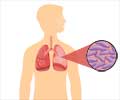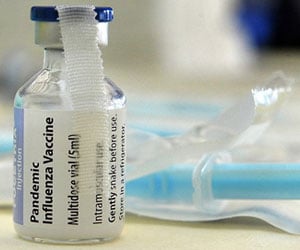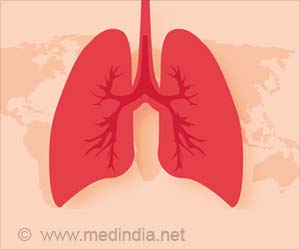
"PZA is probably the most unique antibiotic we have because instead of only going after TB cells that are actively replicating, it seeks out and destroys dormant TB cells that can't be controlled by other antibiotics," says study leader Ying Zhang, MD, PhD, a professor in the Bloomberg School's Department of Molecular Microbiology and Immunology. "It's like when you're weeding. Most current drugs just chop off the leaves, but the roots are still there. PZA gets at the roots. Learning how it does that may enable us to get rid of TB quicker and more permanently without relapse."
The new study, done in conjunction with Fudan University in Shanghai, found that PZA cuts off the energy production of Mycobacterium tuberculosis, killing the bacteria. It does this by disrupting the PanD, which, among other things, is crucial to synthesis of co-enzyme A, a molecule at the center of energy metabolism. When PanD is working correctly in a TB cell, it allows the cell to survive and persist despite a long course of treatment. Only PZA's unique ability to halt this process allows it to clear the dormant bacteria.
The researchers, who discovered another PZA target, Rspa, in recent years, say that PanD mutations are only found in a subset of TB bacteria resistant to PZA. The lab work done for the new study provides evidence that PanD is a new and distinct target for PZA, Zhang says.
PanD, Zhang says, is a promising finding because the enzyme is only present in bacteria like those found in TB and not in the cells of humans who contract the disease. It is always safer to attack a target that is only found in the dangerous organism and not in its host, he says.
In 2012, an estimated 8.6 million people worldwide developed TB and 1.3 million died from the disease. While the rate of new diagnoses is dropping, the number of drug-resistant cases is growing. When a patient is diagnosed with the lung disease, the course of treatment is six months of antibiotics. Researchers all over the world are trying to develop drugs that can work more quickly and without the toxic side effects common to all of the drugs in use.
Advertisement
Now that he understands the role that PZA plays on PanD and cells that persist long after treatment, Zhang says he plans to search for compounds that target PanD in the same way. The findings could have implications, he says, for developing drugs that target persistent organisms in other bacterial infections where dormant cells are known to re-emerge such as Lyme Disease, urinary tract infections and even cancer.
Advertisement
Source-Eurekalert












